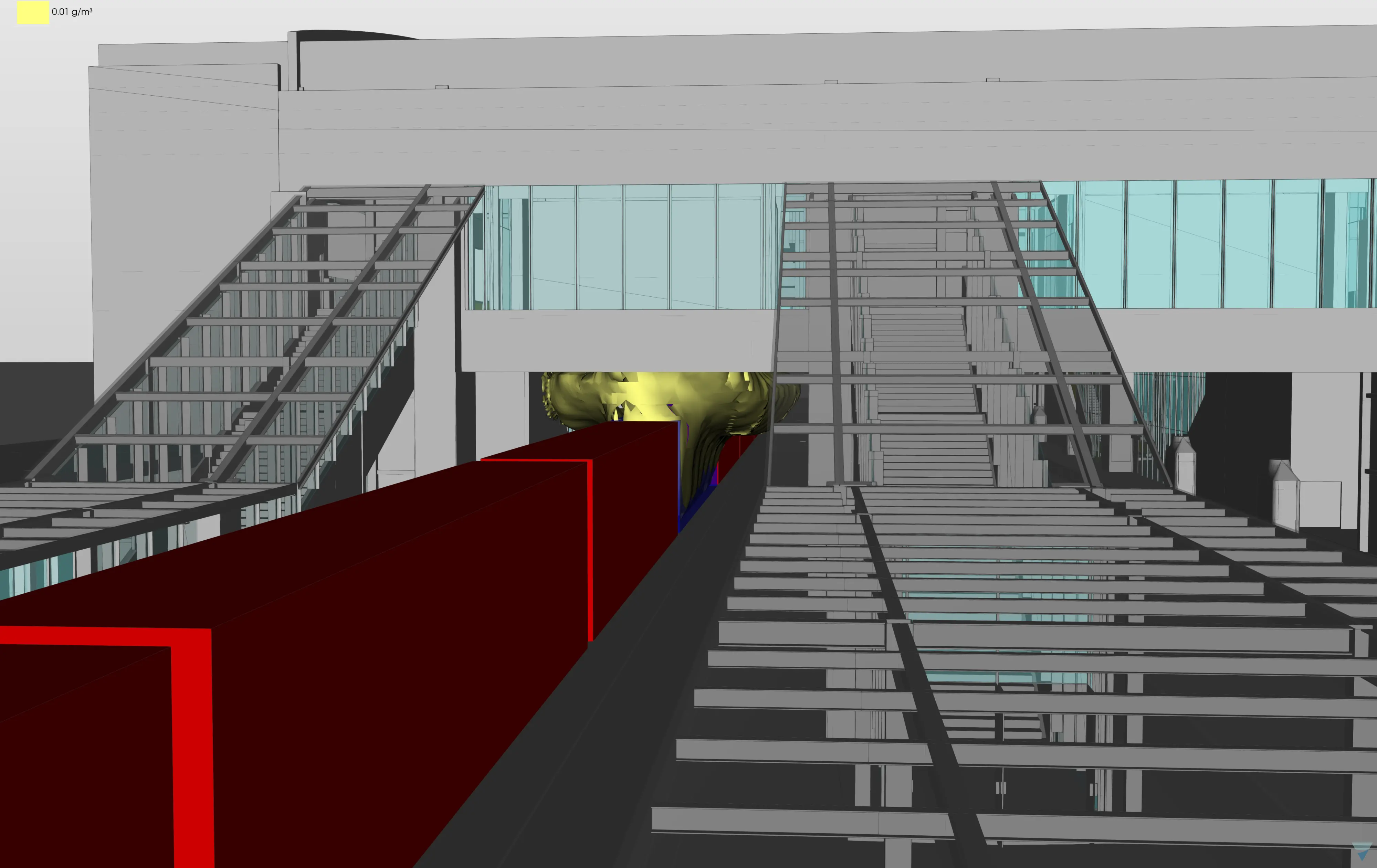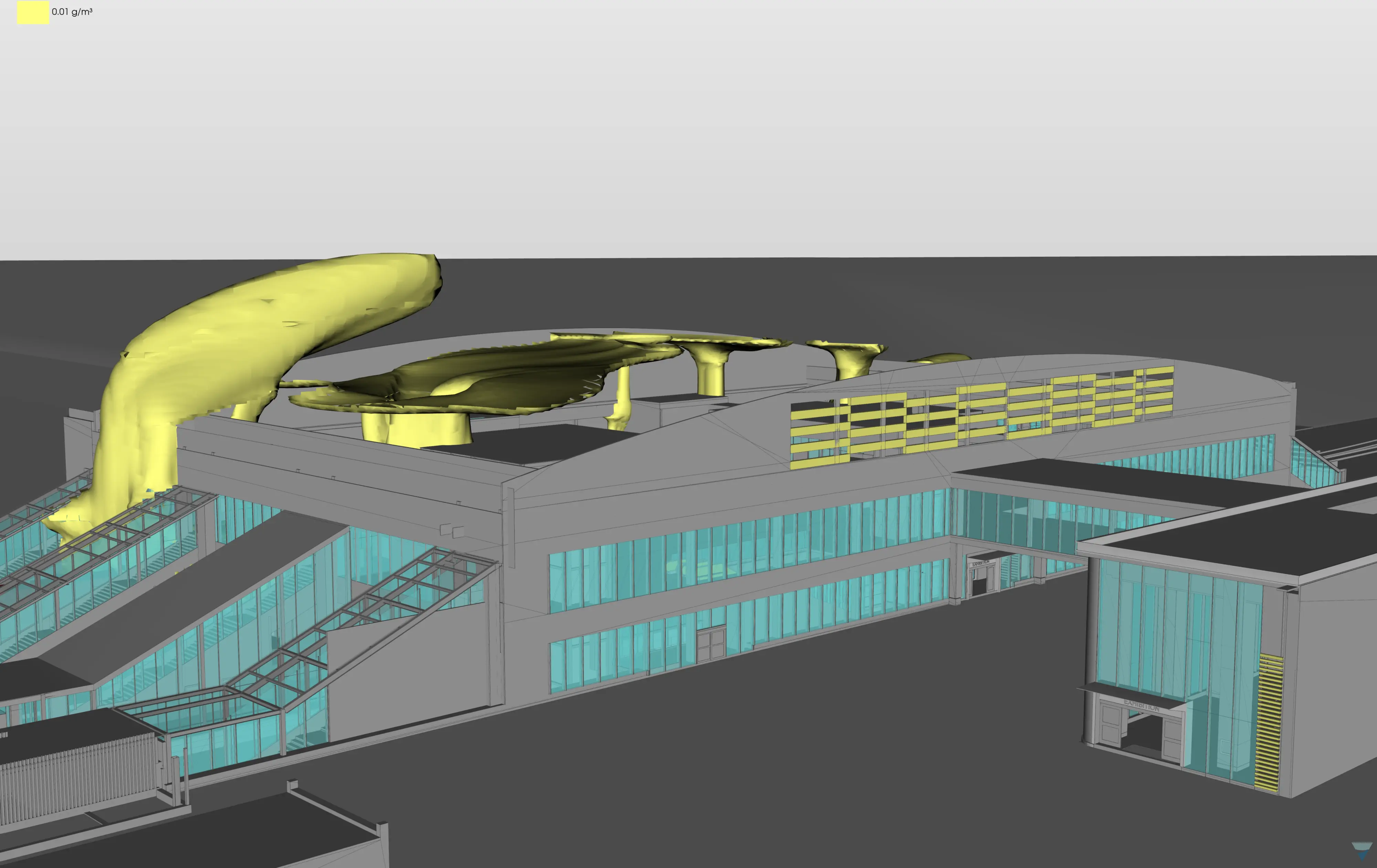
This case study was carried out in collaboration with the Department of Industrial Engineering of the University of Roma Tor Vergata for Italferr, the no.1 Engineering company in Italy.
The objective was to examine the smoke dispersion within a train station and its potential impact on the evacuation plan.

Video 1: overview showing the complexity of the IFC model
The focus lies on the critical initial 4-5 minutes post-incident, aiming to identify areas where smoke concentration might impede the station evacuation and assessing the duration of such effects.
Video 1 shows the complexity of the IFC model, which includies dozens of staircases and escalators. Multiple rounds of simulations have been run to factor open or closed doorways.
Figure 1 provides a view of the platform level captured half a minute after the accident.
Adjacent Figure 2 displays the smoke clouds 3 minutes post-incident: the smoke not only enveloped the platforms but also ascended to the concourse level through various pathways, notably escalators. The upward columns of heated smoke within the Concourse level ultimately reach the ceiling and disperse.
Figure 1: view of the platform 1 minute after the accident | Figure 2: propagation of smoke clouds 3 minutes after the accident |



Comments